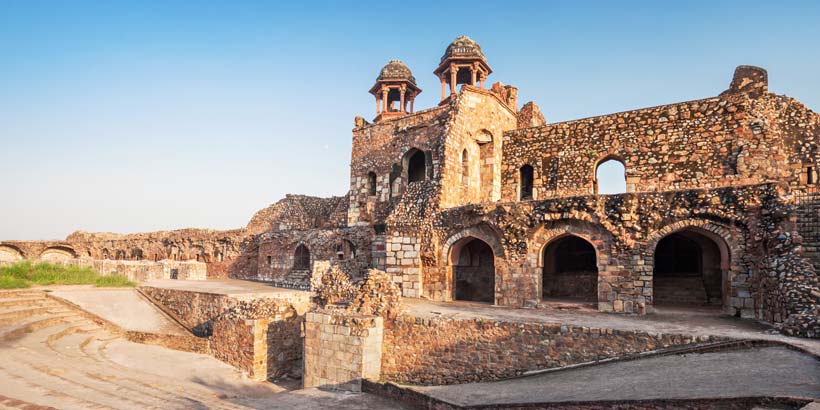Brightsun’s Guide to the Ultimate Delhi Heritage Walk
Witness a different side of the capital city with our guide to the Ultimate Delhi Heritage Walk that follows the footprints of different dynasties that ruled this historical city.
Delhi is one of the oldest cities in the country and an epicentre of leisure activities. It is also the country’s national capital and has served as the cultural hub of India. Surrounded by the Aravallis in the west and river Yamuna flowing north to south in the east, settlements in this region have existed since the Stone Age.
Delhi offers an interesting amalgam of medieval and modern. You can trace almost thousand years of history here through monuments dotting various parts of the city. Different dynasties built their capitals in Delhi at different points of time over the centuries. Many made Delhi their home while others built new cities around.
There are over 15 sites where a new city was built, from Anangpur and Lal Kot in the early medieval period to Tughlaqabad and Kotla by the Delhi Sultanate rulers and the Mughal capital of Shahjahanabad and New Delhi by the British, most recently. You will find the city of Delhi filled with numerous monumental ruins, including forts, palaces, tombs and shrines, step wells, bazaars, and rest houses, most of which form part of everyday lives of the local communities.
Here are the most famous attractions in Delhi that you must include in your Delhi Heritage Walk to peek into the rich history of the capital city.
Chandni Chowk
Chandni Chowk is the one of the oldest and busiest streets in Delhi and a part of what was once Shahjahanabad in the Mughal times. Chandni Chowk literally means a moonlight square and gets its name from a canal that ran down in the middle of the street with pools at different points which would reflect moonlight. You won’t find the stream today but the bazaar thrives with its small shops selling everything from spices and sweets to clothes. The old merges with the new at Chandni Chowk.
Best time to visit: Between 8am - 10am is ideal as it gets extremely crowded after that.
What to wear: Comfortable shoes and carry a scarf to cover your head during visits to religious sites. Avoid wearing short clothes.
How to reach: If travelling by metro, get off at Chandni Chowk station or you can take any bus going to Red Fort. Cabs are also available.
Hauz Khas
Explore the medieval ruins in Hauz Khas village & Deer Park on your visit to Delhi. The tomb of Sultan Firoz Shah Tughlaq and the old Madarsa (religious school) are unique monuments here that offer you a peek into the 14th century history. You’ll find classrooms, living quarters, and other remains from that period built along the edge of a lake. Deer Park is also a major highlight with its Mughal era tombs. It is also a popular picnic spot in Delhi.
Best time to visit: Anytime between sunrise & sunset
What to wear: Walking shoes
How to reach: By metro – get off at Hauz Khas metro station and take an auto rickshaw to Hauz Khas fort.
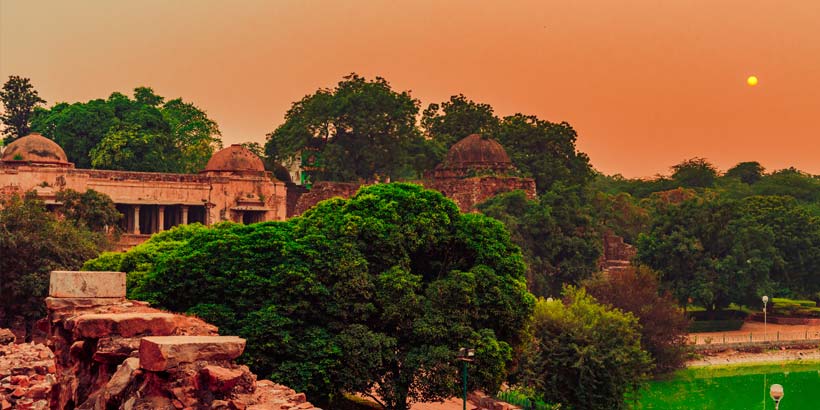
Lodhi Garden
Sprawled across 90 acres, Lodhi Garden is one of Delhi’s most popular parks and a favourite amongst locals. It is located amidst landscaped garden and houses numerous royal tombs of early rulers of Delhi including Muhammad Shah Sayyid and Sikander Lodhi. You will also find a gateway called Shisha Gumbad at the front and an exquisite mosque with Bada gumbad at the back. The garden is filled with a variety of trees and birds.
Best time to visit: Sunrise to sunset
What to wear: Walking shoes; carry drinking water
How to reach: Nearest metro stations are Jor Bagh (yellow line) & Khan Market (violet line) or take auto/cab to gate no. 1 near Lodhi restaurant
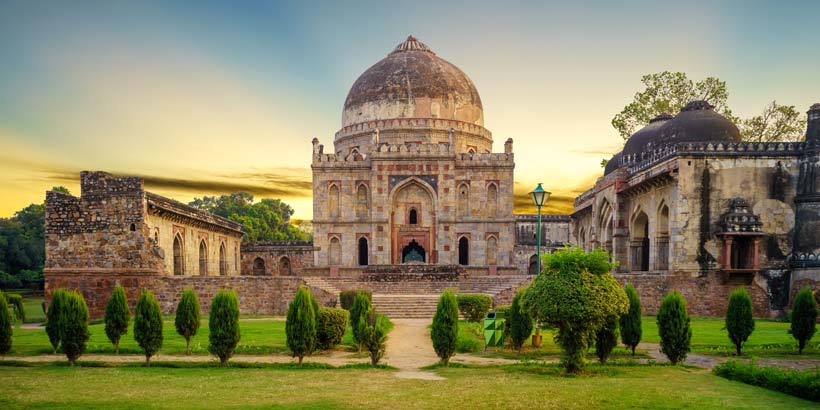
Mehrauli Archaeological Park
Spread over 200 acres, this park is popularly known as Jamali Kamali and is dotted with over 100 historically significant monuments from early medieval times to the 19th century. The main attractions here include the mosque and tomb of Jamali Kamali, a step well, and the guest house of the British officer, Thomas Metcalfe. Old pillars and remains of ancient temples are also scattered throughout the park.
Best time to visit: Between sunrise & sunset
What to wear: Comfortable shoes, sunglasses, & a hat to cover your head
How to reach: Nearest metro station is Qutub Minar (yellow line) or you can travel by any bus going towards Lado Sarai. Get off at Ahimsa Sthal and walk towards Gurugram, along Mehrauli-Gurugram Road.
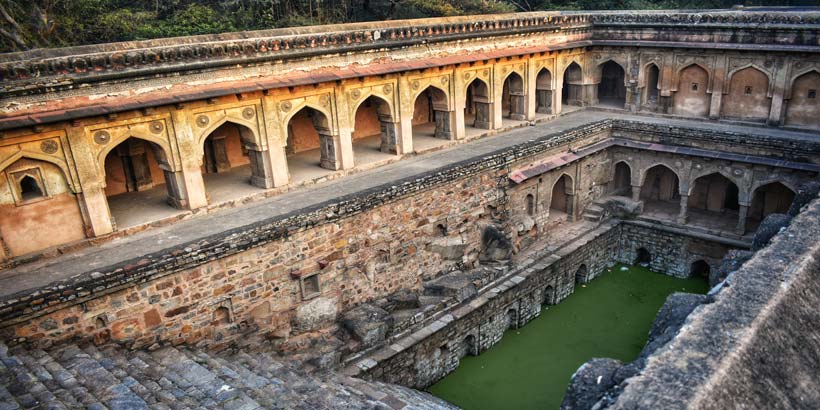
Kashmiri Gate
Kashmiri gate, built by Mughal emperor Shahjahan, is the northern gate in the walled city of Delhi and was named under the British rule; it marked the beginning to the road that led to Kashmir. Kashmiri Gate gained attention during the mutiny of 1857. A walk here takes you through the landmarks of 1857 uprising and offers a peek into the times of British rule in the city before the revolt broke out. Nicholson Cemetery, Kashmiri Gate, St James Church and Dara Shukoh’s library are some of the main attractions located here.
Best time to visit: Morning hours between 8am - 10am
What to wear: Comfortable shoes
How to reach: Nearest metro station is Kashmiri Gate
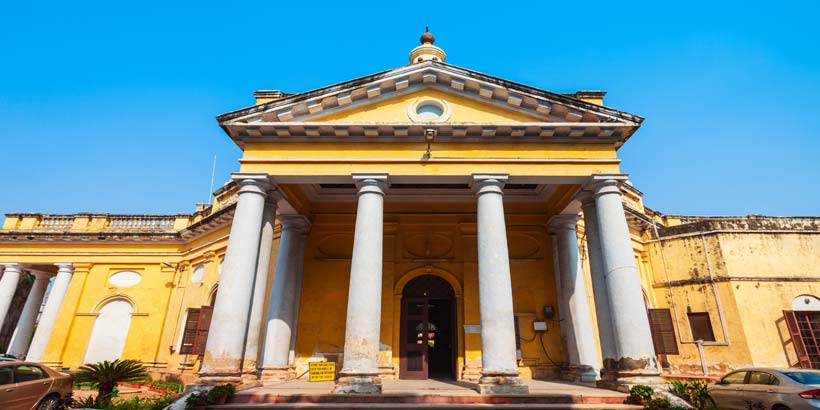
Jama Masjid & Old Delhi
Jama Masjid and the streets of Old Delhi is a prominent highlight of the city. You just can’t take a trip to Delhi without visiting this part of the capital. Jama Masjid is one of the largest mosques in India, offering a bird’s eye view of the entire old city. Walk through the narrow lanes of Old Delhi filled with historical treasures including old havelis, vibrant bazaars, temples, & mosques. You will also find small stalls selling local street food and some of the oldest eateries in the city. Dive into an array of succulent kebabs, korma and biryani, and you’ll learn what the fuss is all about!
Best time to visit: Early morning hours
What to wear: Comfortable walking shoes, modest clothes
How to reach: Nearest metro station is Chandni Chowk and then you can walk or take a rickshaw to reach Jama Masjid
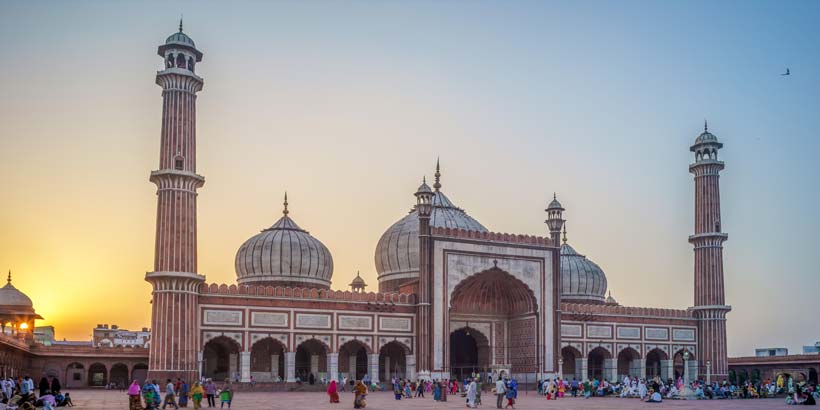
Tuglaqabad Fort
One of Delhi’s oldest forts, Tuglaqabad Fort was built by Ghiyasuddin Tuglaq who established the third historic city here which was later abandoned. The ruins, frozen in time still speaks of the might of the Tuglaq dynasty. The remains of this 14th century complex stretch as far as the eye can see. A walk here allows you to explore the fort palace of Mohammad-bin-Tughlaq, also called the “mad” king, the mausoleum of Ghiyasuddin Tughlaq, granaries, palace buildings, dungeons, and a secret escape route.
Best time to visit: Between sunrise & sunset
What to wear: Walking shoes, sunglasses
How to reach: Saket metro (yellow line) & Tuglaqabad metro (violet line) are the nearest metro stations. Take a cab/auto to reach the fort entrance.
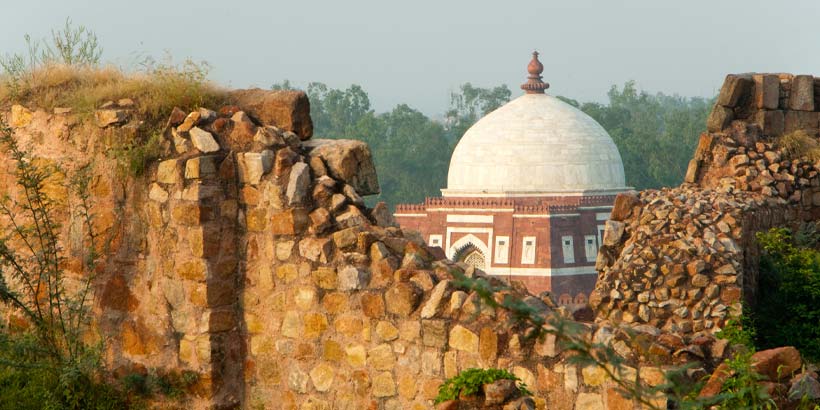
Old Fort
Discover the lesser-known structures of the Old Fort - the capital city of Mughal emperor, Humayun which was further extended by Sher Shah Suri in the 16th century. This massive complex is scattered with several monumental ruins of historical value with interesting stories to tell. A walk here will take you to Mosque Khairul Manzil - built by the wet nurse of Akbar, the shrines of the mystic Sheikh Nuruddin and Sheikh Abu Bakr aka Matka Pir Dargah, the burial place of the revered Persian poet – Bedil, and the Bhairon (Shiv) temple that was built to protect the legendary city of Indraprastha.
Best time to visit: Between 10am - 5pm
What to wear: Comfortable walking shoes
How to reach: Pragati Maidan is the nearest metro station from where you can take a cab or auto to Old Fort.
